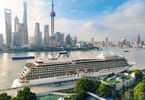JAKARTA, Bangkok (eTN) – It started first in 2008 in Jakarta, and in 2010 came the time for Bangkok. In both cases, European-based Kempinski Hotels SA has been the driving force to revive iconic properties in both Indonesia and Thailand. Two new properties – the Kempinski Hotel Indonesia and the Siam Kempinski Hotel – want to symbolize again a certain way of life in Southeast Asia.
In Jakarta, Kempinski was lucky to move into one of the capital’s most glamorous symbols. The Hotel Indonesia was opened in 1962 by then President Soekarno. From its early days, the hotel incarnated Indonesia’s new independent spirit and its entry into a modernist time. The Hotel Indonesia was seen as a showcase of Indonesia art and traditions. The building, constructed by US architect Abel Sorensen, was built in a T shape to allow unobstructed views from each room. The lobby, meeting rooms, restaurants, and cafes displayed masterpieces from various Indonesian artists, which have now been carefully restored. Its prestige finally placed the hotel in 1993 on the list of Indonesia’s cultural heritage sites.
As a new commercial development project was approved by 2004, Hotel Indonesia then stopped its operations. But instead of being turned down to give way to another glitzy skyscraper, the government asked the property owner to keep the building and restore it to its previous glory with Kempinski SA being selected to manage the hotel. The renovated building is now part of Grand Indonesia Mall, one of Jakarta’s most luxurious shopping centers.
Hotel Indonesia is once more the center of Indonesia’s capital social life. Original artworks have been restored and fit with the new contemporary hotel design. The historical Bali room, with its wood panels and carving, was carefully restored to its original state and stands now as Jakarta’s top luxurious venue. The hotel just reopened the Pavilion Ramayana Bar, previously a restaurant with old frescos depicting Indonesian traditional characters. The chill-out lounge with its elevated bar is certain to also attract Jakarta’s elite and lots of foreign visitors.
Old Siam Intercontinental Hotel used to be the equivalent of Hotel Indonesia in Jakarta in the early seventies. It had a distinctive modern architecture, with its lobby crowned by a transparent giant Thai-style roof. Unfortunately, the Siam Intercontinental did not share the fate of its Jakarta counterpart. It was demolished less than a decade ago to make way for Siam Paragon. An architectural disaster, Siam Paragon has succeeded in becoming one of Bangkok’s most popular high-class shopping centers. During May violences, Siam Paragon was lucky enough to avoid being ransomed, in contrary to nearby Central World.
The destruction of the Siam Intercontinental generated an outcry from art historians and some Thai architects, as its innovative shapes were a unique legacy of the late 60s in their search for a new Thai contemporary identity.
Meanwhile, some of the spirit of the old Siam Intercontinental might survive with the official opening of the Siam Kempinski. Despite difficult times braced by the Thai capital, Kempinski only slightly delayed the opening previously planned by early 2010. According to hotel management, the 303-room Kempinski Siam Hotel hopes to go back to the spirit of elegance, which characterized the previous Intercontinental.
The landscaped gardens surrounding the hotel have been partially recreated, according to old plans for Intercontinental. The gardens integrate three swimming pools and outstanding water features. Inside the hotel, the 900 m2 Grand Ballroom is also expected to attract some of Bangkok’s most prestigious events. While the external architecture of the hotel does not look particularly innovative, the elegant grand interior design is certain to make the Kempinski property a favorite meeting place in Bangkok’s social scene.
WHAT TO TAKE AWAY FROM THIS ARTICLE:
- The destruction of the Siam Intercontinental generated an outcry from art historians and some Thai architects, as its innovative shapes were a unique legacy of the late 60s in their search for a new Thai contemporary identity.
- But instead of being turned down to give way to another glitzy skyscraper, the government asked the property owner to keep the building and restore it to its previous glory with Kempinski SA being selected to manage the hotel.
- While the external architecture of the hotel does not look particularly innovative, the elegant grand interior design is certain to make the Kempinski property a favorite meeting place in Bangkok's social scene.






















